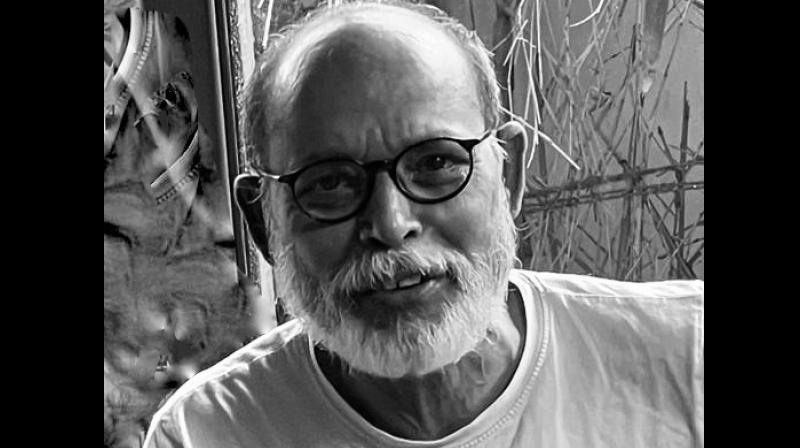Sports in India is at a crossroads. On one side, we have a growing appetite for sporting events and a wave of first-generation athletes making their mark on the global stage. Conversely, the stories we tell about them—through films, advertisements, and documentaries—often reduce their struggles and achievements to clichés.
But sports isn’t just about winning or entertainment. It’s about culture. It’s about identity. So why does our communication about sports often fall short of capturing this essence?
The entertainment trap: When stories lose their sport
Think about the last Indian sports movie you watched. Maybe it was Bhaag Milkha Bhaag—a beautiful homage to Milkha Singh’s life. But did it take you into the world of athletics? Did it show you the sweat, the drills, the unyielding discipline of an Olympic runner? Not really. Instead, it leaned on drama and personal struggle, leaving the essence of sport unexplored.
Or take Paan Singh Tomar, a story brimming with potential. It gave us a glimpse into the steeplechase champion’s life but left us longing to see the sport itself—the strategy, the technique, the very soul of the athlete.
Globally, movies like King Richard strike a balance. They explore not just the personal struggles but also the relentless grind that shapes champions. Why don’t we tell our stories with that kind of depth? Is it because we think drama sells better than discipline? Or do we not understand the nuances of the sports we’re portraying? Whatever the reason, the result is the same: stories that feel hollow and overly polished.
When brands lean on stars instead of stories
Let’s switch gears to advertisements. Imagine an ad for running shoes featuring a Bollywood superstar. Sure, it might look glamorous. But does it make you want to lace up and hit the track? Probably not. That’s because the focus is on the star, not the sport.
Now think about Nike. They don’t sell shoes—they sell stories. They have built a legacy by working with athletes, not celebrities. Often, these athletes weren’t even famous when Nike partnered with them. Instead, the brand invested in their journeys, amplifying their stories of grit and excellence. As Steve Jobs once said:
"Nike doesn’t just make shoes. They honour great athletes and the sport itself."
Indian brands have much to learn from this approach. Authentic sports communication doesn’t just promote products; it inspires action, builds trust, and creates role models.
A lesson from the market: Quiet brands that speak volumes
Let’s look closer to home. Brands like Nivia, Cosco, and Shiv-Naresh may not dominate your social media feeds, but they’ve quietly built a loyal following by staying true to their values. Shiv-Naresh, for instance, is a favourite among athletes for its reliable, affordable gear. It doesn’t chase celebrity endorsements—it focuses on the people who use its products.
And then there’s Decathlon. No flashy ads. No big-name endorsements. It is just an immersive, community-driven experience. Walk into any Decathlon store, and you’ll find everything you need to start a sport. Affordable gear, knowledgeable staff, and an environment that encourages play. It’s no wonder Decathlon has become the go-to brand for urban sports enthusiasts.
Like Nike, Decathlon focuses on authenticity. They’ve shown that you don’t need glitz to connect with people—just a genuine understanding of what they need and why they love the game.
Power Shoes: A nostalgic glance back
If you grew up in the ’90s, you probably remember Bata’s Power shoes. They weren’t just sneakers—they were a statement. The iconic Trikaya Grey campaign made us believe that slipping on a pair of Power shoes could make us faster, stronger, and a little more confident. For many of us, it was the first time we associated footwear with aspiration rather than utility.
The campaign was clever, understated, and timeless. It spoke to a generation finding its feet—literally and metaphorically. Why don’t we see campaigns like this anymore? Perhaps brands have become too cautious, relying on templates instead of storytelling. But imagine the impact of recapturing that thoughtful, relatable approach in today’s sports communication.
Cultural integrity: Learning from Kenya
Let’s take a detour to Kenya. Ask someone about Kenya’s Olympic medals, and they might not know the exact numbers. But mention long-distance running, and their eyes will light up. Kenya is synonymous with running, and that’s no accident. It’s a legacy built on culture, discipline, and relentless determination.
Brands like Nike tapped into this identity, celebrating Kenyan runners and, in turn, promoting their products. It wasn’t about big endorsements but about aligning with the spirit of the sport. Indian brands could do the same by spotlighting our unique sports cultures—from wrestlers in Haryana’s akharas to archers in Jharkhand. These stories are waiting to be told.
Documentaries that skim the surface
Indian sports documentaries are another missed opportunity. They often sparkle on the surface but fall short where it matters. Glossy visuals, sweeping montages, and dramatic voiceovers may grab attention, but they rarely capture the essence of the sport.
Take a documentary about a wrestler. Instead of showing us the artistry of their craft—the grit of their training, the strategy of their matches—it settles for glorifying their stardom. And the heart of the story is lost.
Compare this to The Last Dance, which immerses you in Michael Jordan’s world. It doesn’t just show you his triumphs; it takes you through the mental battles, the pressure, and the grind. That’s the kind of storytelling Indian sports communication needs.
Grassroots Gold: Celebrating local heroes
India’s sporting soul doesn’t reside in big stadiums or glamorous arenas. It’s in the akharas of Haryana, the dusty football fields of Manipur, and the village cricket leagues of Rajasthan.
Imagine a campaign that follows a young wrestler training at dawn in a mud pit, his dreams set on Olympic gold. Or a sprinter racing barefoot on a rural track, fueled by determination. These are the stories waiting to be told—stories that inspire, unite, and reflect the true spirit of Indian sports.
Beyond the cricket obsession
Let’s face it: cricket dominates India. But does it have to overshadow every other sport? Wrestlers, archers, boxers—they all have stories that can captivate the nation if told well.
Imagine a campaign about a fearless boxer who overcomes societal barriers, or an archer who perfects her craft against all odds. These stories aren’t just about struggle; they’re about breaking barriers and achieving greatness. And they deserve the spotlight just as much as cricket does.
Conclusion: Insights for a better future
If we want to change the narrative of Indian sports communication, here’s where we start:
Tell authentic stories: Work with athletes, not celebrities. Let their journeys inspire audiences.
Go beyond the surface: Explore the nuances of the sport—its techniques, its culture, its challenges.
Celebrate grassroots heroes: Shine a light on the unsung players and communities that are the backbone of Indian sports.
Diversify storytelling: Move beyond cricket and embrace the richness of India’s sporting landscape.
Create a legacy: Don’t just sell products. Build campaigns and content that leave a lasting impact.
Sports in India is more than a growing industry—it’s a growing identity. By telling authentic stories, celebrating unsung heroes, and respecting the essence of sports, we can move from grit to grace. Together, let’s craft a narrative as resilient and inspiring as the athletes we celebrate.
The author is founder, Never Ending Story and Nomad Films.










